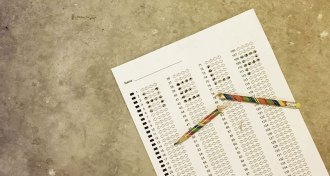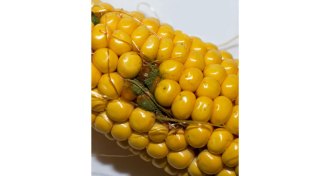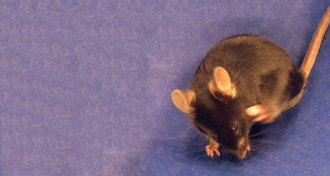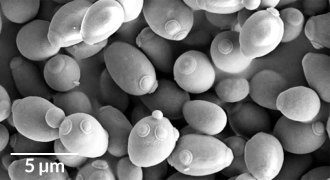Life
Sign up for our newsletter
We summarize the week's scientific breakthroughs every Thursday.
-
 Neuroscience
NeuroscienceMaking a mistake can put your brain on ‘pause’
When there’s not much time to recover, one error can lead to another.
-
 Genetics
GeneticsHow to grow toxin-free corn
Corn genetically altered to produce specialized molecules may prevent a fungus from tainting it with carcinogenic toxins.
-
 Neuroscience
NeuroscienceScratching is catching in mice
Contagious itching spreads by sight mouse-to-mouse, and scientists have identified brain structures behind the phenomenon.
By Susan Milius -
 Genetics
GeneticsScientists move closer to building synthetic yeast from scratch
Scientists have created five more synthetic yeast chromosomes.
-
 Animals
AnimalsDe-extinction probably isn’t worth it
Diverting money to resurrecting extinct creatures could put those still on Earth at risk.
-
 Archaeology
ArchaeologyAncient dental plaque tells tales of Neandertal diet and disease
Researchers have reconstructed the diet and disease history of ancient Neandertals.
-
 Archaeology
ArchaeologyAncient dental plaque tells tales of Neandertal diet and disease
Researchers have reconstructed the diet and disease history of ancient Neandertals.
-
 Animals
AnimalsReaders dispute starfishes’ water-swirling abilities
Volcanic eruptions, fast-freezing water, starfish physics and more in reader feedback.
-
 Neuroscience
NeuroscienceBrain training turns recall rookies into memory masters
Six weeks of training turned average people into memory masters, a skill reflected in their brains.
-
 Agriculture
AgricultureFleets of drones could pollinate future crops
Chemist Eijiro Miyako turned a lab failure into a way to rethink artificial pollination.
-
 Ecosystems
EcosystemsInvasive species, climate change threaten Great Lakes
In The Death and Life of the Great Lakes, a journalist chronicles the lakes’ downward spiral and slow revival.
-
 Paleontology
PaleontologyIdentity of ‘Tully monster’ still a mystery
Paleontologists challenge whether the Tully monster actually was a vertebrate because it lacks key vertebrate structures.